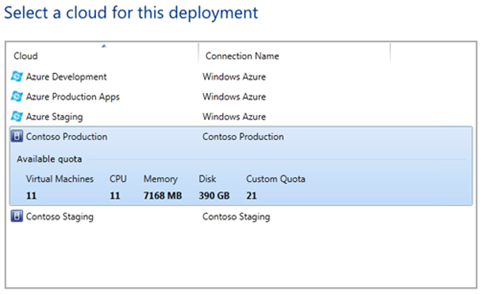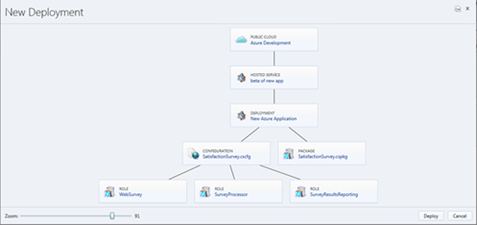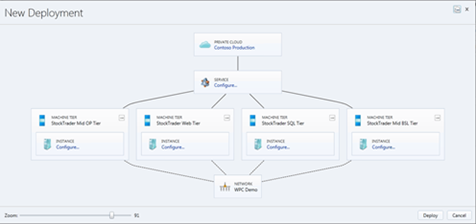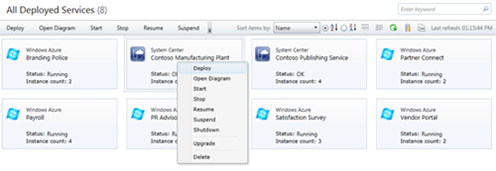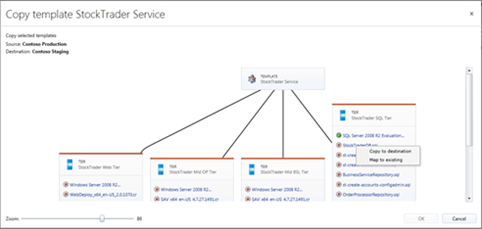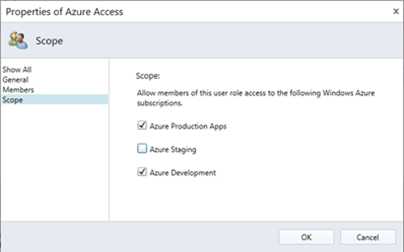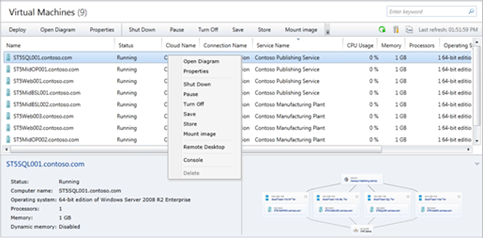App Controller – Enabling Application Self Service
As announced on the Server and Cloud Platform Blog, System Center App Controller 2012 Beta is now available!
App Controller is a new member of the System Center family and provides a number of capabilities that enable Application Self Service across both private and public clouds. In this post, we will explore these key capabilities.
Before we dive into the details, let’s define what we mean by the term ‘application’ and what we mean by a ‘service’. In a cloud computing model, a service is a deployed instance of an application along with its associated configuration and virtual infrastructure. So, in this context, you will see that we talk about ‘applications’ but we manage them as ‘services’.
Enabling a Standardized Approach to Deploying Applications Across Private and Public Clouds
Virtual Machine Manager 2012 introduces Service Templates, which provide a way to encapsulate all the components of an application into a consistent and defined template, including the Operating System and associated configuration, networking, and compute requirements, as well as the application resources and scale requirements. These Service Templates can be delegated to users for deployment on a schedule that meets their needs in a Self Service model. The templates are also version controlled, allowing for a deployed service to be updated with a newer template.
Windows Azure also operates on a template model, combining an Application Package with an associated Configuration.
App Controller allows a user to view, manage, and deploy services to both a private cloud (via Virtual Machine Manager) and the Public Windows Azure Cloud in a consistent template driven manner. As you can see in the screenshot below, at deployment time the user can choose to deploy the service to any cloud they have access to, as well as see the available quota they have left in that cloud.
The two screenshots below show the deployment of an Azure (top) and a VMM service (below). As you can see, the template diagram and configuration is very similar. This was a key design goal in order to make the deployment of a service consistent regardless of location.
A Unified Web Console to Simplify Management of Applications Across Private and Public Clouds
App Controller provides the ability to manage services running in on-premises private clouds and in Windows Azure Public Clouds. Users can see all of the services that they have access to in a simple, unified view.
In the screenshot below, this user has access to two private cloud instances and three Windows Azure subscriptions. This user can also see what the delegated resource quota utilization is for his or her private clouds.
The screenshot below shows the view a user has of running services.
Actions can be performed against the services, including start/stop the service, apply a new template to upgrade the application, or even delete it if the service is being decommissioned.
Manage and Maintain Application Resources
App Controller provides the user with an easy experience to upload, manage, and duplicate application resources. From receiving an updated application on a file share, to duplicating the application between clouds, to uploading a Windows Azure application package, App Controller provides a clean and simple management capability for all of these application resources.
Duplicating service templates is an easy copy/paste function between private clouds allowing the user to duplicate all content or map the template component to existing resources that exist in the destination cloud, as shown below.
Manage Multiple Windows Azure Subscriptions and Delegate Access to Them
App Controller allows you to connect to multiple Windows Azure subscriptions and then delegate subscription access out to users via their Active Directory credentials. This provides a common access model across the management of both private and public clouds and the services running in them.
Access to Windows Azure subscriptions is delegated on a per-subscription basis, as shown below.
Infrastructure Management, Reimagined
And, finally, App Controller also provides the ability to manage the individual Virtual Machines that are running within the services to which the user has access. All of the usual management capabilities are there: stopping, starting, mounting an ISO opening a remote desktop connection, and so on. But, we still provide that information in the context of the service, so the user always knows what he or she is working on.
Calls to Action!
So, what do you do now? Where can you find more information? Look no further – here is a list of links to all of the App Controller related content!
- Get involved in the Community Evaluation Program (CEP). We are running a private cloud evaluation program starting in November where we will step you through the entire System Center Private Cloud solution set, from Fabric and Infrastructure, through Service Delivery & Automation and Application Management. Sign up here.
- Online Documentation
- App Controller TechNet Forums
We hope you decide to take App Controller for a spin, and please provide us with feedback on your experiences.
Thanks
Adam
 |
Adam Hall Senior Technical Product Manager |
Send me an e-mail Follow me on Twitter Connect with me on LinkedIn
